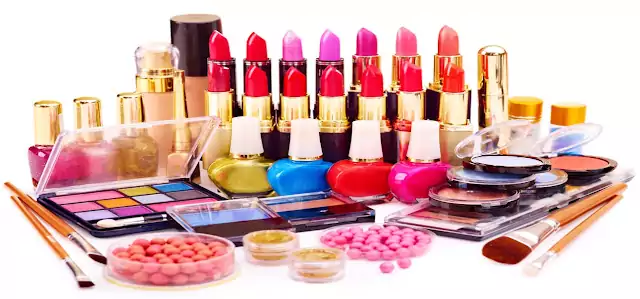People have desired to improve themselves with decoration since time began. Whether this is for hunting, social status, attraction of the opposite sex, ritual purposes or for simply wanting to look better, woman and men alike have used an array of materials with occasional damaging results.
Dangers in Make-up
One of the most prolific disasters in make- up history was the use of lead in powder to whiten faces. This powder is still used in parts of Africa today. While the powder did cast a white pall over the wearers face it also ate away the skin. The powder was responsible for the premature deaths of Victorian women. Another dangerous product that was used to whiten the face was an eighteenth –century European product called Complexion Wafers. The wafers actually worked but they did so by poisoning the blood so that it transported fewer red cells and provided less oxygen to important organs. Blush for cheeks was hardly any better. The color was derived from cinnabar a poisonous red sulfide of mercury. While the poison on a woman’s cheeks was dangerous enough many women used it to tint their lips where the poison was easily ingested. In this method it was also transferred across the placenta to an unborn fetus. Hundreds of still births, miscarriages, and deformities could be attributed to this fashion fad.
Early Beauty Fads
Hieroglyphics have shown the beauty of not only Cleopatra but of other Egyptian women. Archaeologists have unearthed palettes they discovered were used for making make-up out of Egyptian soil that dates back as far as 6000 B.C. Using the palette and studying hieroglyphics, historians call tell that the favorite color for eye shadow was green and that lipstick was black. They also state that women stained their fingers and feet reddish -orange using henna plus stained the veins in their breast blue and tipped their nipples with gold. The men in Egypt were apparently vain in life as well as death. Their tombs were stocked with enormous amounts of cosmetics to take with them to the afterlife. When King Tutankhamen’s tomb was opened in 1920, scholars found lip and cheek color, several jars of skin cream, and still usable perfumes.
Greeks Encouraged Natural Beauty
Studies have shown that during the centuries prior to the Christian era, most culture adorned itself with paints, perfumes and powders. The one exception to this rule would be the Greeks. History has shown that the Greeks favored a more natural appearance. During this time the only Greeks who wore makeup were the courtesans, the mistresses of the royal and wealthy. The Greek courtesans also discovered that if they kept perfumed oil in their mouth, their breath would remain sweet and pleasant. On the opposite side of the Greeks, the Romans, both men and women were practically unrestrained with cosmetics.
Greek history also gave the world the first reference that blondes had more fun. To the Greeks, lighter hair symbolized innocence, superior social status, and a high sexual attraction. To achieve a lighter shade of hair color the courtesans used an apple –scented pomade of yellow flower petals, and potassium salt. Because Romans were so obsessed with beauty and cosmetics many etymologists thought that the word “cosmetic” came from a man named Cosmis, who was a merchant in the Roman Empire during the reign of Julius Caesar. However it has since been discovered that the word most likely originated with the ancient Greeks. Their word Kosmein, which means decoration, is now considered the origin of the word cosmetic.
The Chemist and Safer Beauty Products
For the larger part of history, cosmetics were homemade or peddled by traveling salesmen who often would never be seen again. The birth of the modern cosmetics industry, with the large rush to purchase brand-name products , along with chemists who provide safer versions of our ancestors beauty aids have allowed consumers to feel relatively safe when trying new products. This does not mean consumers have completely abandoned the older remedies. One look through a beauty magazine will show hints for puffy eyes by putting on chilled cucumbers, or a beauty mask made of honey and wheat germ oil. It should not be surprising in this age of beauty worship that the cosmetic industry is one of the largest around.
With many baby boomers reaching retirement age the push for anti-aging products is on the rise. One look around a cosmetic counter in any store will show how America is obsessed with staying young. But for most of the world the days of lead based face powder and cinnabar lip tint are long gone.
